EMOS M2092 Handleiding
EMOS
Multimeter
M2092
Bekijk gratis de handleiding van EMOS M2092 (24 pagina’s), behorend tot de categorie Multimeter. Deze gids werd als nuttig beoordeeld door 7 mensen en kreeg gemiddeld 4.8 sterren uit 4 reviews. Heb je een vraag over EMOS M2092 of wil je andere gebruikers van dit product iets vragen? Stel een vraag
Pagina 1/24

2202003000_31-M2092_00_01 148 × 210 mm
www.emos.eu
M2092 | MD-220
GB Digital Multimeter
CZ Digitální multimetr
SK Digitálny multimeter
PL Multimetr cyfrowy
HU Digitális multiméter
SI Digitalni multimeter
RS|HR|BA|ME Digitalni multimetar
DE Digitales Multimeter
UA Цифровий мультиметр
RO Multimetru digital
LT Skaitmeninis multimetras
LV Digitālais Multimetrs
EE Digitaalne multimeeter
BG Цифров мултиметър

2
GB | Digital Multimeter
Multimeter MD-220 is a compact, battery-powered, user-friendly
device for measuring alternating and direct current, voltage and
electrical resistance, for testing diodes and transistors and for sound
testing of conductivity. The multimeter was designed in accordance
with the IEC-61010 standard regarding electronic measuring devices
in the category (CAT III 600 V), 2nd degree of pollution.
The CAT III category is used to measure circuits powered by a xed
output power supply, such as a relay, socket, switchboards, power sup-
plies, short branching circuits and lighting systems in large buildings.
Safety Instructions
• Read this manual thoroughly before using the multimeter.
• Always check the connection of testing conductors and measuring
range settings.
• Do not exceed the maximum input limits:
• for AC and DC voltage: 600 V
• for alternating and direct current: 10 A
• Before changing the measuring range (function), disconnect the
conductors from the measured circuit.
Main Features
LCD display: maximum displed value 1999 (3 and 0.5 digits) with
automatic polarity indication
Measuring method: dual – reacts to the pulse leading and trailing
edge
Maximum standard mode: 500 V DC/AC ms
Reading frequency: approx. 2–3 readings per second
Operating temperature: 23°C ±5°C
Temperature range: operating 0°C to +40°C; storage –10°C to
+50°C
Power supply: 9 V battery (1604 or 6F22). The status of the battery
is indicated by the icon on the left side of the display
Dimensions and weight: 85 × 165 × 32 mm, 250 g (including the 9
V battery)
Accessories: Instruction manual, measuring tips
Operating Procedure
a. If the device does not turn on (the display does not light up) or
if the symbol appears on the display upon turning on the
device, the battery is completely drained. Replace the battery.
b. When measuring quantities for which a symbol is displayed
below the measuring tip connection sockets, do not exceed the
measuring range (risk of damaging the device).
c. If you do not know the approximate voltage or current value
beforehand, set the measuring range to maximum and grad-
ually decrease it as you measure.
d. If the measuring range is exceeded (the display shows the
number "1"), switch to a higher range.
e. Avoid contact with high voltage.
Measuring Direct (DC) Voltage
1. Connect the black measuring tip to the socket labelled as "COM"
and the red conductor to the socket labelled as "V/Ω".
2. Switch to the function marked as V . Choose a measuring range
and place the measuring tips where you wish to measure DC volt-
age. The voltage value and polarity will be shown on the display.
Follow points c), d), e) of the Operating Procedure!
Range Accuracy Deviation
200 mV ±0.5 % of reading
± 1 counts 100 μV
2 V
±0.5 % of reading
± 3 counts
1 mV
20 V 10 mV
200 V 100 mV
600 V ±0.8 % of reading
± 2 counts 1 V
Input impedance: 10 MΩ for all ranges
Overload protection: 250 V rms of peak voltage at 200 mV and
600 V rms in all other ranges.
Measuring Alternating (AC) Voltage
1. Connect the black measuring tip to the socket labelled as "COM"
and the red conductor to the socket labelled as "V/Ω".
2. Switch to the function marked as V~. Choose a measuring range
and place the measuring tips where you wish to measure AC
voltage. The measured values will be displayed.
Follow points c), d), e) of the Operating Procedure!
Range Accuracy Deviation
2 V
±0.8 % of reading
± 3 counts
1 mV
20 V 10 mV
200 V 100 mV
600 V ±1.2 % of reading
± 3 counts 1 V
Input impedance: 10 MΩ for all ranges
Frequency range: 40 Hz to 400 Hz
Overload protection: 600 V of peak voltage in all ranges
Measuring Direct Current
1. Connect the black measuring tip to the socket labelled as "COM"
and the red conductor to the socket labelled as "mA". To measure
maximum current (up to 10 A), connect the red conductor to the
socket marked as 10 A.
2. Switch to the function marked as A . Choose a measuring range
and place the measuring tips where you wish to measure DC cur-
rent. The current value and polarity will be shown on the display.
• Maximum input current of 200 mA or 10 A depends on which
socket the red measuring tip is plugged into. Excessive current
will destroy the fuse. In that case, it has to be replaced. The 10
A range is not protected by a fuse and can be measured for a
maximum of 15 s, maximum voltage drop of 200 mV.
Follow points c), d) of the Operating Procedure!
Range Accuracy Deviation
2 mA ±0.8 % of reading
± 1 count
1 μA
20 mA 10 μA
200 mA ±1.2 % of reading
± 1 count 100 μA
10 A ±2 % of reading
± 5 counts 10 μA
Overload protection: F 0.2 A/250 V fuse, (10 A range without fuse)
Maximum input current: 10 A, 15 seconds
Measuring Alternating Current
1. Connect the black measuring tip to the socket labelled as "COM"
and the red conductor to the socket labelled as "mA". To measure
maximum current (up to 10 A), connect the red conductor to the
socket marked as 10 A.
2. Switch to the function marked as A~. Choose a measuring range
and place the measuring tips where you wish to measure AC cur-
rent. The current value and polarity will be shown on the display.
• Maximum input current of 200 mA or 10 A depends on which
socket the red measuring tip is plugged into. Excessive current
will destroy the fuse. In that case, it has to be replaced. The 10
A range is not protected by a fuse and can be measured for a
maximum of 15 s, maximum voltage drop 200 mV.
Follow points c), d) of the Operating Procedure!
Range Accuracy Deviation
2 mA ±1.2 % of reading
± 3 counts
1 μA
20 mA 10 μA
200 mA ±2 % of reading
± 3 counts 100 μA
10 A ±3 % of reading
± 7 counts 10 mA
Overload protection: F 0.2 A/250 V fuse, (10 A range without fuse)
Maximum input current: 10 A, 15 seconds
Frequency: 40 Hz to 400 Hz
Maximum voltage drop: 200 mV
Indicates average value of sine waves.

3
Measuring Electrical Resistance
1. Connect the black measuring tip to the socket labelled as "COM"
and the red conductor to the socket labelled as "V/Ω" (connect
the red measuring tip to "+").
2. Switch to the function marked as Ω. Choose a measuring range
and place the measuring tips where you wish to measure electrical
resistance. The measured values will be displayed.
• If the range is exceeded, the display will show the number "1".
Switch to a higher range.
• If no load is connected to the input or the input circuit is open, the
value of "1" will be displayed for all ranges.
• When checking a circuit with resistance, make sure the circuit is
without power and all capacitors are discharged.
Range Accuracy Deviation
200 Ω ±0.8 % of reading
± 3 counts 0.1 Ω
2 kΩ
±0.8 % of reading
± 1 count
1 Ω
20 kΩ 10 Ω
200 kΩ 100 Ω
2 MΩ 1 000 Ω
20 MΩ ±1 % of reading
± 2 counts 10 kΩ
Overload protection: 250 V DC/ms AC in all ranges
Diode Test
1. Connect the black measuring tip to the socket labelled as "COM"
and the red conductor to the socket labelled as "V/Ω" (connect
the red measuring tip to "+").
2. Switch to the function marked with the symbol and connect
the measuring tips to the diode. The approximate voltage value
will be shown on the display in the direction of the ow of current.
Acoustic Test
1. Connect the black measuring tip to the socket labelled as "COM"
and the red conductor to the socket labelled as "V/Ω" (connect
the red measuring tip to "+").
2. Switch to the function marked with the symbol and connect
the measuring tips to the tested spot. If the tested circuit has
resistance lower than 50 Ω, a continuous audio signal will be heard.
hFE Transistor Test
1. Use the switch to set a range marked as "PNP" or "NPN".
2. Determine whether the transistor is of type PNP or NPN and
determine the emitter, base and collector.
3. Plug the leads to the terminal on the front panel (C – collector,
B – base, E – emitter). The display will show an approximate hFE,
in testing conditions: base current = 10 μA, Vce = 2.8 V.
Replacing the 9 V Battery
If the display shows the " " symbol, the battery needs replacing.
Remove the battery cover on the back of the meter, remove the battery
and insert a new one. We recommend using GP batteries.
Replacing the Fuse
To replace the fuse, remove the entire rear cover and replace the fuse
with another F 0.2 A/250 V fuse of the same size.
This device is not intended for use by persons (including children)
whose physical, sensory or mental disability or whose lack of experi-
ence or knowledge prevents them from using it safely. Such persons
should be instructed in how to use the device and should be supervised
by a person responsible for their safety. Children must always be
supervised and must never play with the device.
Do not dispose with domestic waste. Use special collection
points for sorted waste. Contact local authorities for information
about collection points. If the electronic devices would be dis-
posed on landll, dangerous substances may reach groundwater and
subsequently food chain, where it could aect human health.
Emos spol s.r.o. declares that the MD-220 is in compliance with the
essential requirements and other relevant provisions of Directive. The
device can be freely operated in the EU. The Declaration of Conformity
can be found at http://www.emos.eu/download.
CZ | Digitální multimetr
Multimetr MD-220 je kompaktní, bateriový, snadno ovladatelný ruční
digitální přístroj pro měření střídavého a stejnosměrného proudu,
napětí a elektrického odporu, pro testování diod a tranzistorů a pro
zvukové zkoušky vodivosti. Multimetr byl navržen v souladu s normou
IEC-61010 vztahující se na elektronické měřicí přístroje spadající do
kategorie (CAT III 600 V), úroveň znečištění 2.
Kategorie CAT III je určena k měření obvodů z vybavení napájeného
pevnou instalací, jako relé, zásuvky, rozvodné panely, napáječe a krátké
větvící obvody a osvětlovací systémy ve velkých budovách.
Bezpečnostní opatření
• Před použitím multimetru prostudujte pečlivě tento návod.
• Vždy zkontrolujte zapojení testovacích vodičů a nastavení rozsahu.
• Nepřekračujte maximální limity vstupu:
• pro střídavé i stejnosměrné napětí 600 V
• pro stejnosměrný i střídavý proud 10 A
• Před změnou rozsahu (funkce) odpojte vodiče od měřeného
obvodu.
Hlavní charakteristika
Displej LCD: maximální zobrazitelné číslo 1999 (3 a 0,5 číslice) s
automatickou indikací polarity
Měřící metoda: duální – reaguje na náběžnou i sestupnou hranu
pulsu
Maximální běžný režim: 500 V DC/AC ms
Čtecí rychlost: přibližně 2–3 čtení za sekundu
Provozní teplota: 23°C ±5°C
Teplotní rozsah: pracovní 0°C až +40°C; skladovací –10°C až +50°C
Napájení: 9 V baterie (1604 nebo 6F22). Na stav baterie upozorňuje
ikona v levé části displeje
Rozměry a hmotnost: 85 × 165 × 32 mm, 250 g (včetně 9V baterie)
Doplňky: Návod k použití, měřicí hroty
Pracovní postup
a. Pokud se přístroj nezapne (displej se nerozsvítí) nebo se po
zapnutí přístroje na displeji objeví symbol , je baterie zcela
vybitá. Baterii vyměňte.
b. Při měření veličin, u kterých je pod zdířkami zapojení měřicích
hrotů zobrazen symbol , nepřekračujte měřicí rozsah (hrozí
poškození přístroje).
c. Neznáte-li přibližnou hodnotu napětí nebo proudu předem,
nastavte nejvyšší rozsah a postupně ho při měření snižujte.
d. Je-li měřicí rozsah překročen (na displeji se zobrazí číslice
„1“), přepněte na vyšší rozsah.
e. Vyhýbejte se kontaktu s vysokým napětím.
Měření stejnosměrného (DC) napětí
1. Připojte černý měřicí hrot do zdířky označené „COM“ a červený
vodič do zdířky označené „V/Ω“.
2. Přepněte na funkci označenou V . Zvolte měřicí rozsah a připojte
měřicí hroty na místo, kde budete měřit stejnosměrné napětí.
Zobrazí se hodnota napětí a současně s ní polarita.
Dále viz body c), d), e) Pracovního postupu!
Rozsah Přesnost Odchylka
200 mV ±0,5 % z rozsahu
± 1 číslice 100 μV
2 V ±0,5 % z rozsahu
± 3 číslice
1 mV
20 V 10 mV
200 V 100 mV
600 V ±0,8 % z rozsahu
± 2 číslice 1 V
Vstupní impedance: 10 MΩ pro všechny rozsahy
Ochrana při přetížení: 250 V rms špičkového napětí na 200 mV
a 600 V rms na všech ostatních rozsazích.
Měření střídavého (AC) napětí
1. Připojte černý měřicí hrot do zdířky označené „COM“ a červený
vodič do zdířky označené „V/Ω“.
2. Přepněte na funkci označenou V~. Zvolte měřicí rozsah a připojte
měřicí hroty na místo, kde budete měřit střídavé napětí. Zobrazí
se příslušné hodnoty.
Product specificaties
| Merk: | EMOS |
| Categorie: | Multimeter |
| Model: | M2092 |
Heb je hulp nodig?
Als je hulp nodig hebt met EMOS M2092 stel dan hieronder een vraag en andere gebruikers zullen je antwoorden
Handleiding Multimeter EMOS

18 Augustus 2024

25 Juni 2023

28 Mei 2023

19 Mei 2023

13 Mei 2023

22 April 2023

18 April 2023

17 April 2023

16 April 2023

12 April 2023
Handleiding Multimeter
- Weidmüller
- Perel
- Metrix
- EEVBlog
- Parkside
- REV
- TFA
- Owon
- Ideal
- Elworks
- Brennenstuhl
- Altai
- Amprobe
- Metrel
- Schneider
Nieuwste handleidingen voor Multimeter
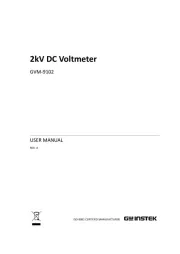
8 September 2025
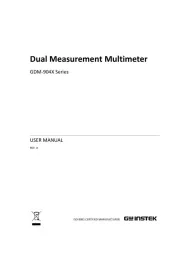
8 September 2025
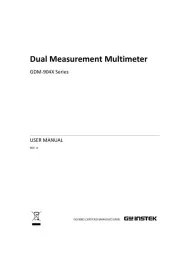
8 September 2025
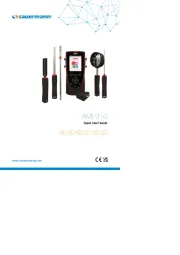
1 September 2025
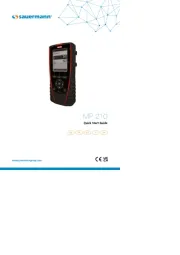
1 September 2025
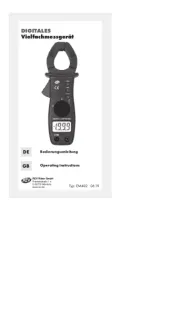
30 Augustus 2025
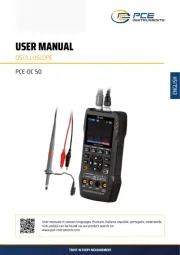
25 Augustus 2025
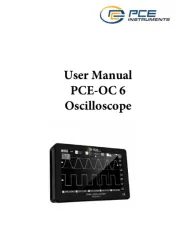
25 Augustus 2025
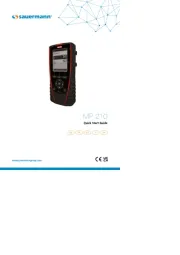
14 Augustus 2025
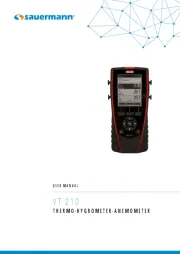
14 Augustus 2025